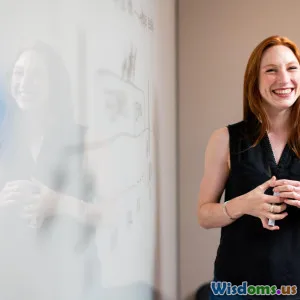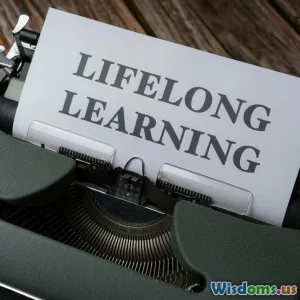
Unlocking Job Opportunities Through Bilingualism in Healthcare
7 min read Explore how bilingualism opens doors to rewarding healthcare careers amid growing linguistic diversity. (0 Reviews)
Unlocking Job Opportunities Through Bilingualism in Healthcare
In today's globalized world, the ability to communicate across languages is more than just a personal asset; it has become a professional necessity in many fields—particularly in healthcare. With populations becoming increasingly diverse, bilingualism offers healthcare professionals a powerful tool to provide improved care, mitigate communication barriers, and unlock a wide range of career opportunities. But how exactly does knowing a second language translate into better job prospects in healthcare? This article dives deep into the transformative potential of bilingualism in healthcare careers, and why language skills should be considered a vital investment.
The Growing Linguistic Landscape in Healthcare
The United States alone is home to over 350 languages spoken across the country, reflecting a vibrant cultural mosaic. According to the Pew Research Center, more than 21.6% of Americans speak a language other than English at home. This linguistic diversity inevitably extends to healthcare settings, where patients’ inability to communicate health concerns or understand medical instructions can compromise care.
Consider a scenario: a Spanish-speaking patient arrives at an emergency room where no clinician speaks Spanish. Misunderstandings about symptoms, allergies, or medications can lead to misdiagnosis or adverse reactions. This example underlines why bilingual healthcare workers are indispensable—they bridge communication gaps, reduce errors, and support equitable treatment.
Why Bilingualism is a Critical Skill in Healthcare
Enhanced Patient Outcomes
Research published in the Journal of General Internal Medicine demonstrates that patients with limited English proficiency have better health outcomes when treated by bilingual providers. Clear communication reduces misunderstandings, improves adherence to treatment plans, and builds patient trust.
Increased Employment Opportunities
Hospitals, clinics, and community health organizations actively seek bilingual professionals. According to a report by the Healthcare Language Access Commission, demand for bilingual healthcare workers grew by over 40% in the last decade. Fluency in languages such as Spanish, Mandarin, or Arabic can differentiate an applicant in competitive job markets.
Higher Earnings and Wage Premiums
Beyond job placement, bilingualism can come with tangible financial benefits. The U.S. Bureau of Labor Statistics and industry salary surveys indicate that bilingual healthcare professionals can earn between 5% to 20% more than their monolingual peers due to their specialized skill sets and the critical needs they fulfill.
Career Advancement and Specialized Roles
Bilingualism often paves the way for roles that require nuanced communication skills, such as patient liaison, medical interpreter, cultural competency trainer, or community health educator. These positions leverage language proficiency alongside healthcare expertise, expanding professional horizons.
Real-World Success: Bilingualism Walking the Talk
Dr. Maria Sanchez, a primary care physician fluent in English and Spanish, shares her experience: "Many of my patients feel more comfortable discussing sensitive issues in their native language. This connection not only improves compliance but also builds rapport impossible to achieve otherwise. It has definitely opened up leadership opportunities in multicultural clinics."
Similarly, Mia Chen, a registered nurse fluent in Mandarin and English, highlights how her bilingualism has impacted her career: "Working in a hospital with many Asian patients, I provide comfort just by speaking their language. It’s rewarding, and my bilingual skills have helped me secure higher responsibility roles faster than I expected."
These examples illustrate how bilingualism goes beyond communication; it forges empathy, trust, and cultural understanding—key pillars of effective healthcare.
How to Cultivate Bilingual Skills Effectively in Healthcare
Choose In-Demand Languages
Evaluate the linguistic demographics of your area or the healthcare sector you wish to enter. Spanish remains the most widely used non-English language in the U.S., but Mandarin, Arabic, Vietnamese, and Tagalog also have significant patient populations.
Engage in Targeted Language Training
Healthcare language training programs focus not just on casual conversation but clinical terminology, patient communication, and cultural nuances. Platforms like the National Board of Certification for Medical Interpreters offer certifications that enhance credibility.
Practical Immersion
Engaging directly with bilingual patients or communities, volunteering, or internships can reinforce classroom learning. Real interactions help build confidence and fluency under professional conditions.
Leverage Technology
Apps like MedSpeak or Duolingo’s healthcare modules augment learning with context-specific vocabulary and scenarios.
Addressing Challenges and Ethical Considerations
Avoid Over-Reliance Without Certification
While bilingual staff can support communication, official medical interpreters undergo rigorous training to ensure accuracy and confidentiality. Healthcare institutions must balance reliance on bilingual clinicians with professional interpreting services.
Cultural Competence Beyond Language
Language is a gateway but understanding cultural beliefs and practices is equally important. Bilingual healthcare workers must strive for cultural competence to avoid misunderstandings and biases.
Conclusion: Language as a Gateway to Inclusive Healthcare Careers
The rise of linguistic diversity in patient populations presents both challenges and incredible opportunities in healthcare. Bilingualism is more than a skill; it’s a bridge to equitable, high-quality patient care and expansive career trajectories. For healthcare professionals and students, investing in language learning is a strategic move that can yield improved patient outcomes, job satisfaction, and financial rewards. The future of healthcare is undeniably multilingual—unlock your potential by speaking the language of care.
Ready to amplify your healthcare career? Start your bilingual journey today and become an indispensable link in your patient’s health story.
Rate the Post
User Reviews
Popular Posts





















